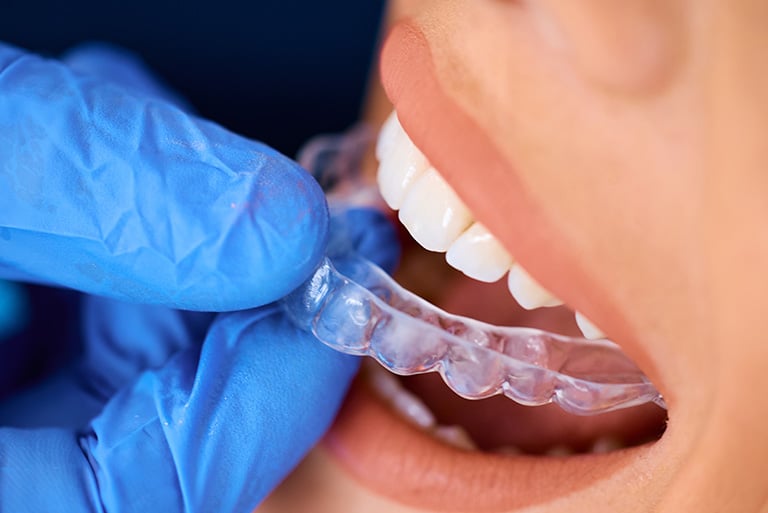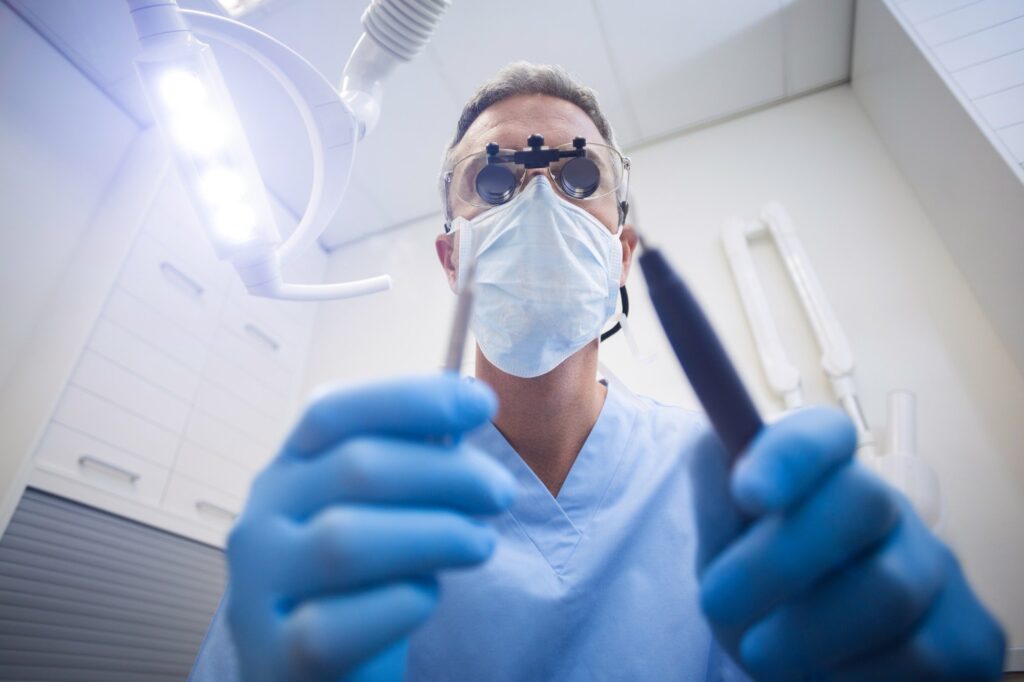Choosing between Invisalign and braces is a big decision when it comes to orthodontic treatment. Both options are effective for correcting misaligned teeth and improving your smile, but they differ in key ways that may influence your choice. In this article, we’ll explore the main differences between Invisalign and traditional braces in terms of appearance, comfort, maintenance, and treatment time to help you decide which option is best for your lifestyle and orthodontic needs.
Appearance: Subtle vs. Traditional
One of the most significant differences between Invisalign and braces is their appearance.
- Invisalign: Made from clear, BPA-free plastic, Invisalign aligners are virtually invisible. This makes them an excellent choice for adults or teens who prefer a discreet orthodontic treatment. Because they are clear and fit snugly over your teeth, most people won’t even notice you’re wearing them.
- Braces: Traditional braces consist of metal brackets and wires attached to the teeth. While effective, they are more noticeable than Invisalign. However, braces have evolved over the years, and options like ceramic braces, which use tooth-colored brackets, offer a less conspicuous alternative.
Which is better? If you prioritize a subtle look, Invisalign is the clear winner. For those who don’t mind showing off their braces, traditional options are equally effective.
Comfort: Aligners vs. Brackets
Orthodontic treatments involve some level of discomfort as your teeth shift into their correct positions, but the level of comfort varies between Invisalign and braces.
- Invisalign: The smooth plastic material of Invisalign aligners reduces irritation to the cheeks and gums. Since there are no metal brackets or wires, you won’t have to deal with sharp edges or wires poking your mouth. Some patients may feel mild pressure when switching to a new set of aligners, but this is usually temporary.
- Braces: Traditional braces can cause more discomfort, particularly after adjustments or if wires come loose. Brackets and wires may rub against the inside of your mouth, causing irritation. Using orthodontic wax can help alleviate this discomfort.
Which is better? Invisalign offers a more comfortable experience overall, especially for those with sensitive mouths.
Maintenance: Cleaning and Care
Proper maintenance is essential for successful orthodontic treatment and maintaining good oral hygiene during the process.
- Invisalign: Invisalign aligners are removable, which makes cleaning your teeth and aligners easy. You can brush and floss your teeth as usual, and you’ll need to clean your aligners regularly to prevent discoloration or odors. However, you must be diligent about wearing the aligners for 20-22 hours a day for them to work effectively.
- Braces: Braces require more care to keep your teeth and brackets clean. Food particles can get stuck in the brackets and wires, making brushing and flossing more challenging. Special tools like interdental brushes and floss threaders can help, but you’ll need extra time and effort to maintain oral hygiene.
Which is better? Invisalign is easier to maintain, but it requires discipline to wear the aligners as directed. Braces are fixed in place, so you don’t have to worry about losing them, but cleaning requires more effort.
Treatment Time: Duration and Discipline
The duration of orthodontic treatment depends on the complexity of your case, but there are some differences between Invisalign and braces.
- Invisalign: For many patients, Invisalign treatment can be completed in 12 to 18 months. However, this timeline depends on wearing the aligners for the recommended 20-22 hours daily. If you don’t wear them consistently, it could prolong your treatment.
- Braces: Traditional braces are often used for more complex orthodontic issues and may require 18 to 24 months of treatment. Since braces are fixed and cannot be removed, compliance isn’t an issue.
Which is better? Invisalign may offer a shorter treatment time for mild to moderate cases, but braces are more reliable for patients who might struggle with wearing aligners consistently.
Flexibility and Convenience
Flexibility is another factor to consider when choosing between Invisalign and braces.
- Invisalign: The ability to remove Invisalign aligners provides more freedom during treatment. You can take them out to eat, drink, or attend special occasions. However, this flexibility requires responsibility—aligners that are removed too often can lead to delayed results.
- Braces: With traditional braces, there’s no need to worry about removing or losing them since they’re fixed in place. However, you’ll need to avoid certain foods, like sticky or hard items, to prevent damage to the brackets and wires.
Which is better? Invisalign offers more convenience, but braces provide a “set-it-and-forget-it” solution for those who prefer less responsibility during treatment.
Effectiveness for Different Cases
Both Invisalign and braces are effective, but their capabilities differ slightly based on the complexity of the case.
- Invisalign: Best suited for mild to moderate alignment issues, such as crooked teeth, gaps, or minor bite problems. Recent advancements in Invisalign technology have made it capable of addressing more complex cases, but severe issues may still require traditional braces.
- Braces: Braces are highly versatile and can treat even the most complex orthodontic issues, such as severe crowding, overbites, underbites, and jaw misalignments.
Which is better? For mild to moderate cases, Invisalign is a great option. For more complex cases, braces are often the preferred choice.
Final Thoughts: Invisalign or Braces?
Both Invisalign and braces are excellent options for straightening teeth and achieving a beautiful smile. The choice between the two ultimately depends on your personal preferences, lifestyle, and the complexity of your orthodontic needs. If you value a discreet and flexible treatment, Invisalign may be the better choice. If you’re looking for a reliable, fixed solution for more complex issues, traditional braces are a great option.Consulting with an experienced orthodontist is the best way to determine the right treatment for your needs. Schedule a consultation today to take the first step toward your perfect smile! Contact us today.


